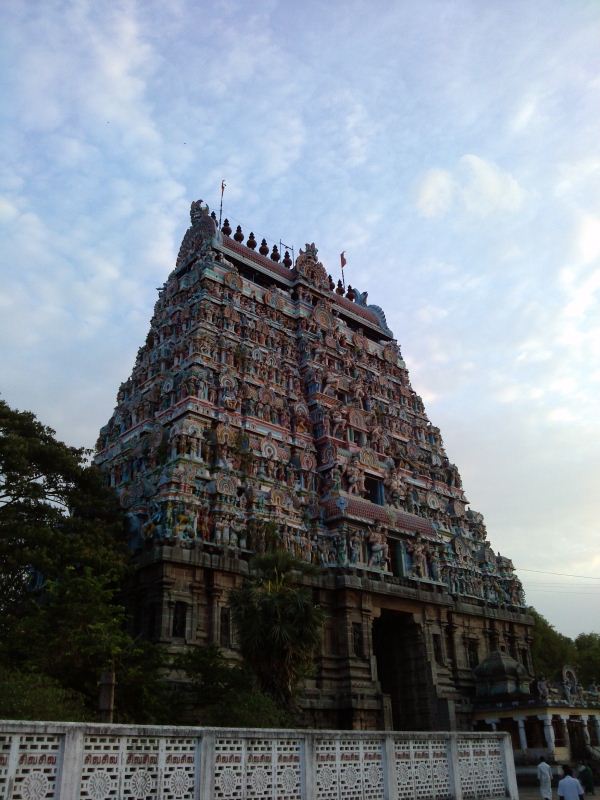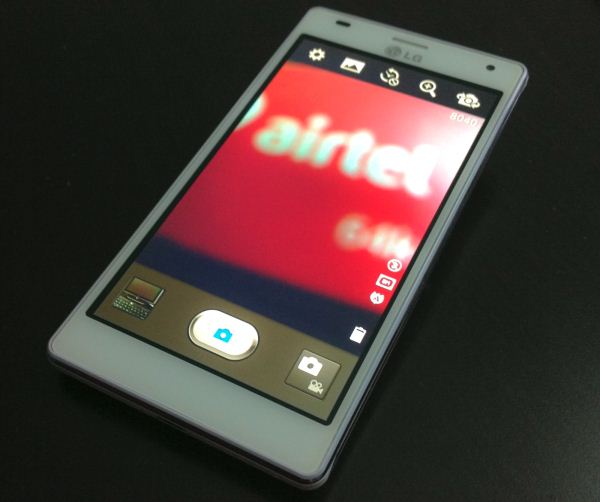LG Optimus 4X HD: Tegra 3 Handsets Stay Global
by Vivek Gowri on August 29, 2012 4:30 AM EST- Posted in
- Smartphones
- LG
- Ice Cream Sandwich
- Mobile
- Tegra 3
The Optimus 4X HD has a pretty standard 8MP camera with backside illumination and 1080p video recording, along with a 1.3MP front facing camera. It’s a decent camera, and it’s improved on some key design flaws in the Optimus 2X camera, particularly the elimination of the plastic window in the battery cover. A bit of digging showed that the CMOS sensors front and back are Sony chips - IMX119 in the front and IMX111PQ in the rear.
IMX111PQ is relatively new, with a sensor size of 1/4.0” and 1.12um square backside illuminated pixels. It shoots 8.08MP photos with a resolution of 3264x2448 as well as 720p60 and 1080p30 video. It’s a smaller sensor than the 1/3.2” Samsung CMOS used in the One X and SGS3, and from an optical standpoint it comes with what I believe is a 4P (4 plastic elements) system with a focal length of 3.2mm. The aperture is f/2.4, which isn't as fast as the f/2.0 of the One X/XL/S, but a bit better than the f/2.6 of the SGS3.
Image quality is pretty good - the O4X HD proved to be a reliable camera sidekick for my travels in India. Between the smaller sensor and the smaller aperture, low light performance definitely isn’t as good as the HTC One camera, but as long as you have a decent amount of light you can produce some really nice images. Compared to the previous year of high-end LG devices, it’s a significant upgrade.
What isn’t, though, is the camera application. It appears pretty similar to LG’s old camera application, but I remember the old one working significantly better than the one in the O4X. If you’re not paying attention, it’s really easy to take an out of focus picture, and pictures in the dark are no longer focused with the flash on. Another problem? Focusing doesn’t happen nearly quick enough. It’s hard to get good pictures out of it, plain and simple. Compared to the super slick camera applications that HTC has been shipping over the last 12 months (not only in the One series, but also with the Amaze and MyTouch 4G Slide from last year), I was pretty disappointed with LG here. The O4X is more than capable of creating quality images, it just takes more work than it should to capture them.



















46 Comments
View All Comments
lowlymarine - Wednesday, August 29, 2012 - link
The chart on the first page says the Galaxy Nexus has an "ARM Mali-400" for the GPU, but I'm fairly certain it actually uses a PowerVR SGX540.lowlymarine - Wednesday, August 29, 2012 - link
Also, no version of the Galaxy Nexus has a MicroSD slot, to my knowledge. And on page 7:"from an optical standpoint it comes with what I believe is a 4P (4 plastic elements) system with a focal length of <focal>mm."
Not sure what's going on there.
Excellent review overall though. I have to agree on the button layout, it's a shame they didn't use the ICS default buttons ans instead chose to stick to a legacy menu button.
VivekGowri - Wednesday, August 29, 2012 - link
Missed a couple of things when I was switching it from SGS2 to the Galaxy Nexus. The focal length is 3.2mm - I just put in a placeholder when I was writing and simply forgot to put in the value when the review went live.Skidmarks - Wednesday, August 29, 2012 - link
It seems to have very capable hardware but is truly a dreadful looking thing IMO.Belard - Wednesday, August 29, 2012 - link
Agreed... then again, look at it this way. When a touch-screen device, such as a phone is made - everything is made around the screen. Right? That doesn't leave much room for much of anything else. Other than the size, thickness, materials, placement of buttons. If you GO BACK in time in the days of candy-bar, sliders, flip-phones - someone like SONY alone had about 60 different phones on the market at once time. Now SONY has about a dozen active smart phone designs (almost all are rectangle with curved corners) - some are quite attractive. But few are available - or they are at the SONY STORE at full price. at&t only sells 1 SONY phone. (I don't consider SONY because their track record with Android is sub-par at this time and their love for those rubber covers over the USB port which I have to fight to remove)You had different colors, different shape of buttons, different size screens. Remember the days of the LG Chocolate?
The required touch-screen kill design ideas. But looking at MC/ Samsung / SONY and NOKIA - there are style DNA that can still be applied to the shape. SONY's style tends to make the phone bulkier than it should be.
Mike0 - Wednesday, August 29, 2012 - link
Also, the International One X has 32GB NAND, not 16GB unless you're referring to the Snapdragon S4 variety which would be useless in this comparison :PMike0 - Wednesday, August 29, 2012 - link
And it's screen is Super LCD2, if you're including technical terms like SAMOLED.Mike0 - Wednesday, August 29, 2012 - link
Also also, (last one I promise :P) the latest 4.0.4 update for the One X International dramatically improves it's scores in BrowserMark (Some people are getting 125000+) and Vellamo (Over 2000 now) and probably more benchmarks so it may be worth updating your results.VivekGowri - Wednesday, August 29, 2012 - link
Yeah, I copied the table over from another review and missed a few things when I was changing them. Missed the GPU/SD card thing when I changed from SGS2 to SGN, and the NAND when I changed from One X (AT&T) to One X (Intl.) Should be fixed now though.arnoudw - Thursday, August 30, 2012 - link
The update to 4.0.4 also drastically improved battery life. Here are some tests: http://tweakers.net/nieuws/83464/update-htc-one-x-...